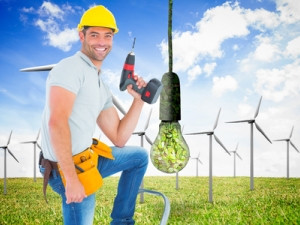
As the public participation process for SA's Integrated Resources Plan 2016 update report (IRP2016) closes today, the renewable industry says the plan artificially limits the amount of green energy that can be added to the grid over the next 20 years.
The IRP serves as a roadmap for SA's energy planning future and will decide how much nuclear, coal and renewable energy is included in the country's future energy mix.
According to the renewable energy sector, under this IRP2016 constrained scenario, there will be greater allocations given to nuclear and coal in the IRP at significantly more expensive cost than new solar and wind energy.
It is estimated nuclear will cost SA about R1 trillion.
SA is not the only country facing this dilemma. In the US, controversy rose after president Donald Trump aired pro-nuclear statements. Trump also recently signed an executive order as part of the administration's plan to roll back Barack Obama's climate change measures.
Axed South African energy minister Tina Joemat-Pettersson in November last year published the draft Integrated Energy Plan as well as the IRP for public comment and engagement. Following last night's Cabinet reshuffle, Mmamoloko 'Nkhensani' Kubayi is now in charge of the Department of Energy and will oversee the IRP.
Lagging behind
Industry body, the South African Renewable Energy Council (SAREC), says the IRP2016 is about three years overdue, which is a significant period considering energy technology changes at a rapid rate.
It notes that while the IRP2010 was last updated in 2013, that report was never confirmed and so the country has been working with an outdated energy plan for far too long. The organisation indicates the IRP process should be a purely techno-economic exercise providing rational input into the policy debate.
"The 2016 update process itself has detracted from the valuable capacity of the IRP modelling tool to identify the cost-optimal build and technology mix for the South African economy; this mix could result in electricity price competitiveness and tariff affordability," says Brenda Martin, chairperson of SAREC.
Another industry collective, the South African Wind Energy Association (SAWEA), has rejected the current base case scenario used for the IRP2016. SAWEA, following extensive consultation with its members, calls for the scenario to be remodelled as a 'least-cost energy plan' and re-issued for consultation.
"The current update includes unjustified artificial constraints on the connection rates for wind and solar PV. A least-cost base case is an essential starting point for the IRP process and government has an obligation to select the most affordable electricity supply options available," the wind body says.
"The South African economy and electricity consumers have a right to see the full picture in terms of future potential for energy supply and associated financial considerations. The cost implications of any policy decision to depart from the least-cost base case should be explained, quantified and justified to ensure rational and transparent trusted policy-making," it adds.
SAWEA argues SA has abundant natural resources. In excess of 70% of SA's land mass has the wind conditions to capture wind energy efficiently, it says.
"Already, we have 19 wind farms with more than 600 turbines connecting 1 417MW of electricity to the grid. The Renewable Energy Independent Power Producers Procurement Programme (REIPPPP) has already procured 3.365GW of wind energy and if the programme proceeds without further delay, this allocation could be achieved annually."
According to SAWEA, so far R91.1 billion is committed to various development initiatives under the REIPPPP. Since 2013, the construction and operation of renewable energy projects has already created 111 835 job years for South African citizens, it notes, adding that with policy certainty, value chain growth effects can further accelerate job growth.
By March 2016, says SAWEA, over R30 billion had been spent on local content and a further R65.7 billion is expected to be spent by projects that have yet to commence construction. Twelve new industrial facilities have been established as a direct result of the programme.
Constrained scenario
The South African Photovoltaic Industry Association (SAPVIA) has added its voice, calling for more consultation over IPR2016.
"Under this constrained scenario, there will be greater allocations given to nuclear and coal in the IRP at significantly more expensive cost than new solar and wind energy. This constraint will ultimately mean the South African consumer will end up paying more," says Mike Levington, CEO of SAPVIA and a member of the Ministerial Committee on Energy.
SAPVIA points out that rapid advancements in renewable energy have meant the cost of new-build solar and wind energy have plummeted from R3.65/kWh in round one to R0.62/kWh in round four.
It explains this price is significantly lower than the tariff prices for coal from IPPs (R1.03/kWh), Eskom coal (R1.10/kWh) and nuclear power which is estimated at between R1.17kWh to R1.30/kWh.
The organisation has recommended the least-cost unconstrained scenario of the IRP be adopted as the base case scenario. This will ensure the mix of technologies included in the IRP2016 is chosen according to those that are most cost-effective and reliable.
It also recommends the cost of any deviation from this least-cost scenario is made public so that it can be debated and interrogated by government and other stakeholders.
Share